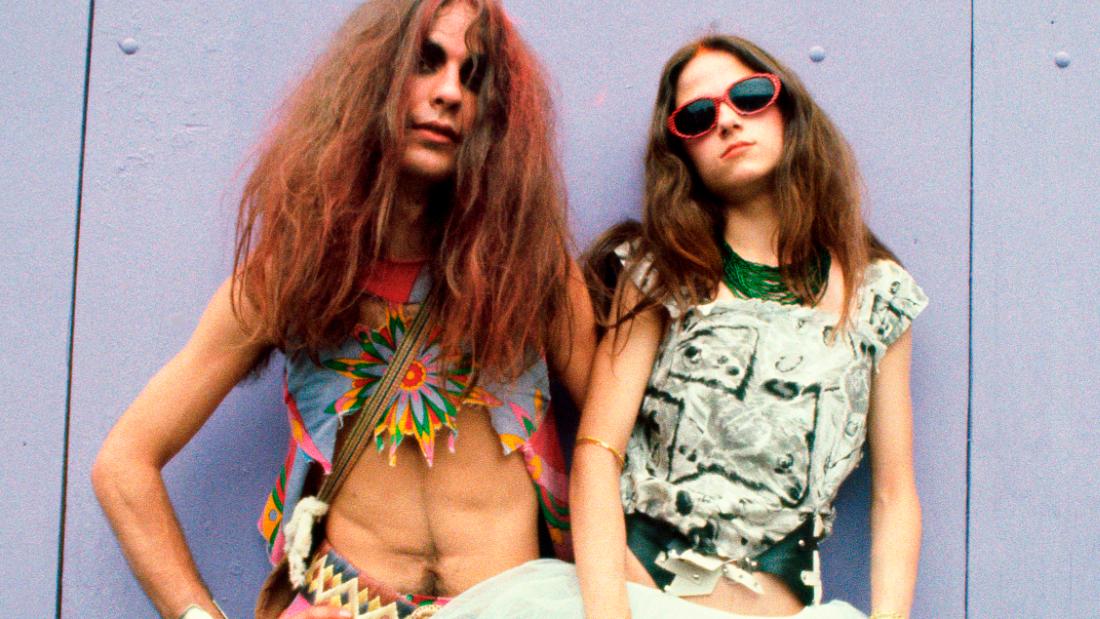La Movida: Vintage photos show Madrid's hedonistic counterculture movement - 5 minutes read
 La Movida: Madrid's hedonistic counterculture movement
La Movida: Madrid's hedonistic counterculture movement"Whenever three people share a desire to do something together, a movida is born." This is how Spanish photographer Pablo Pérez-Mínguez encapsulates La Movida Madrileña, the countercultural movement that spawned from Madrid after the end of Francisco Franco's dictatorship in 1975.
After decades of censorship, repression and ostracism from the rest of the world, Spain began a transition to democracy and its capital city was transformed. The nighttime saw people coming together like never before and became the catalyst for new forms of expression across music, fashion, cinema, painting and photography.
Pérez-Mínguez is one of four photographers selected by curator Irene de Mendoza and her team for an exhibition titled "La Movida: A Chronicle of Turmoil" at Rencontres d'Arles photography festival in the south of France. "La Movida was related to youth, counterculture and identity. People started to gather after dark, started wearing the clothes they wanted to wear, it was an explosion of freedom, aided by the fact that international artists, especially musicians, started coming to Spain and appeared on national TV," de Mendoza said in a phone interview.
A concert is in fact recognized as the moment of inception of the movement itself, the Canito Memorial Concert, held on Feb. 9, 1980 to honor the memory of the drummer from music group Tos, who had died in a car accident. "But it was more spontaneous than planned. Many of the main characters of La Movida even say that it wasn't a specific movement, but rather people who just started coming together and sharing ideas. It was more like a wave," said de Mendoza.
While the word movida translates literally to move, its meaning in the context of the movement might come from the slang term describing a quest that two or more people embark on to find drugs, according to de Mendoza. The use of recreational drugs, along with other forms of transgression, was one of La Movida's main traits. "In Spanish, it's a word we use a lot today too, to mean something important, or something that creates stress because there's a lot going on at the same time -- we say it's a movida."
The biggest name to come out of La Movida is actor and filmmaker Pedro Almodóvar. "He was launching his first films and he was in contact with other artists in the movement, such as Pablo Pérez-Mínguez, whose studio was used as a setting in some of his films."
used to joke Pérez-Mínguez, who died in 2012, was already an established photographer at the time. He signed his work as "PP" and used to joke that it meant "pobre pero mítico," or "poor but a legend." Among his subjects, often musicians, was Spanish-Mexican pop singer Alaska, considered one of the founding artists of La Movida.
Also connected to the music scene was photographer Miguel Trillo, who was born in the sputh of Spain but moved to Madrid because of La Movida."He started going to concerts to take pictures of the of the musicians, but at some point he decided to move the camera from the stage to the public, showing how newly found freedom expressed itself also in the choice of outfits of concertgoers."
For an exhibition in 1983, Trillo used one of the first color photocopiers available in Spain to make multiple copies of his photographs so that all visitors could take one home -- in a nod to that idea, this is recreated at the Arles show.
Although most of the La Movida photographers knew one another, the movement was characterized by an extremely varied aesthetic. Photographs by Ouka Leele -- the pseudonym of photographer Bárbara Allende Gil de Biedma -- are colored by hand using water colors. "She didn't like black and white, but felt that color film didn't work as she wanted to," explained de Mendoza.
The movement existed well into the mid 1980s, when its oomph started to slow down. But one particular group might have unintentionally killed it, according to de Mendoza.
"It was the politicians. When they started to talk about La Movida, around 1985 or 1986, and even created specific events like concerts or exhibitions around the movement, that was the end of it."
Source: CNN
Powered by NewsAPI.org
Keywords:
Madrid • Hedonism • Counterculture of the 1960s • Spanish language • Pablo Pérez • Miguel Mínguez • La Movida Madrileña • Counterculture • Madrid • Francisco Franco • Francoist Spain • Censorship • Political repression • Ostracism • Spain • Photography • Miguel Mínguez • Photography • Curator • Rencontres d'Arles • Photography • Counterculture • Cultural identity • Political freedom • Spain • Canito (Spanish footballer, born 1956) • Memory • Idea • Word • Meaning (linguistics) • Context (language use) • Slang • Recreational drug use • Spanish language • Filmmaking • Pedro Almodóvar • Pablo Pérez • Miguel Mínguez • Miguel Mínguez • Spaniards • Mexico • Alaska • La Movida Madrileña • Photographer • Spain • Madrid • Concert • Photocopier • Spain • Arles • La Movida Madrileña • Aesthetics • Ouka Leele • Pseudonym • Photography • Watercolor painting • Black and white • Oomph! •